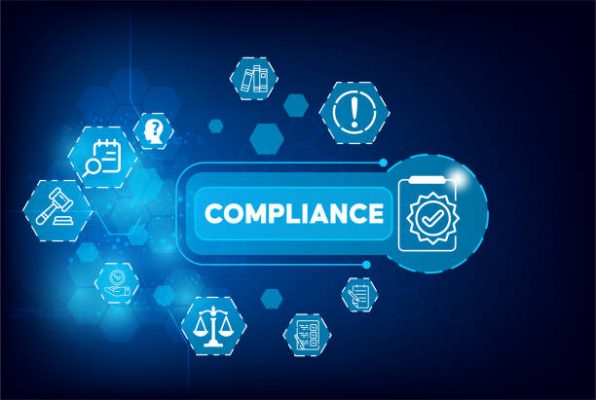
- June 2 2025
- SFI Solution Team
Validating Third-Party Integration Tools for Security Compliance
In the current digitally interconnected environment, tools for third-party integration have become vital for improving operational efficiency, optimizing workflows, and fostering innovation.
From customer relationship management systems and marketing automation platforms to cloud storage solutions and payment gateways, organizations are increasingly dependent on external services to maintain their competitive edge.
Nevertheless, this rising reliance introduces a frequently neglected risk—security compliance.
Ensuring that third-party integration tools meet security compliance standards is not merely a recommended practice—it is an essential requirement.
Neglecting this can lead to data breaches, penalties for non-compliance, damage to reputation, and potential legal consequences.
In this article, we will examine the importance of third-party validation, the associated risks, and the methods for assessing integration tools to guarantee strong security compliance.
Why Security Compliance Matters in Third-Party Integrations
When integrating with third-party tools, you’re essentially extending your organization’s IT infrastructure beyond its perimeter. This means you are also extending your exposure to potential threats.
Key Reasons Security Compliance Is Crucial :
-
Data Protection : Third-party tools often access sensitive customer data, proprietary business information, or financial details.
-
Regulatory Requirements : Laws such as GDPR, HIPAA, SOC 2, CCPA, and PCI-DSS require organizations to ensure the security of any third-party vendors.
-
Risk Mitigation : Without proper validation, a third-party tool could become an easy entry point for cyberattacks.
-
Reputation Management : Security breaches tied to third-party tools can erode customer trust and damage brand reputation.
Common Risks Associated with Third-Party Tools
Understanding the risks can help organizations be proactive in evaluating third-party vendors. Some of the common risks include :
-
Data leakage or unauthorized access
-
Insecure APIs or endpoints
-
Lack of vendor-side encryption
-
Non-compliance with regulatory standards
-
Software vulnerabilities or outdated libraries
-
Poor incident response capabilities
Step-by-Step Guide to Validating Third-Party Tools for Security Compliance
1. Conduct a Risk Assessment
Start by identifying and categorizing all third-party tools used within your organization. Evaluate their level of access to sensitive data and assess the potential impact of a security incident.
2. Review Security Documentation
Ask vendors for their security policies, white papers, and compliance certifications. Key documentation includes :
-
SOC 2 Type II Reports
-
ISO/IEC 27001 Certifications
-
GDPR compliance statements
-
Penetration test reports
-
Data processing agreements (DPAs)
3. Evaluate Regulatory Compliance
Ensure the tool aligns with your industry’s compliance standards. For instance :
-
Healthcare: Look for HIPAA compliance
-
Finance: Require PCI-DSS certification
-
Global operations: GDPR and CCPA adherence
4. Assess API and Integration Security
APIs are the most common method of third-party integration and one of the biggest attack surfaces. Validate that the API :
-
Uses secure authentication (OAuth 2.0, JWT)
-
Supports encryption (HTTPS, TLS 1.2+)
-
Implements rate limiting and monitoring
-
Follows the principle of least privilege
5. Audit Data Handling and Privacy Practices
Understand how the third-party vendor processes, stores, and deletes data. Ask the following :
-
Is data encrypted at rest and in transit?
-
Who has access to the data?
-
What is the data retention policy?
-
How is personal data anonymized or tokenized?
6. Review Vendor Security Posture
A secure tool is only as good as the company behind it. Investigate :
-
Past security incidents or breaches
-
Frequency of security updates
-
Bug bounty programs
-
Transparent incident response protocols
7. Include Security Clauses in Contracts
Legal contracts should include clear language around :
-
Data ownership and access
-
Security incident notification timelines
-
Liability and indemnification
-
Right to audit
8. Implement Ongoing Monitoring and Re-Validation
Security is not a one-time check. Continuously monitor the performance and compliance of integrated tools via :
-
Security Information and Event Management (SIEM) tools
-
Vendor risk management platforms
-
Annual reassessments
-
Automated vulnerability scans
Tools and Frameworks to Assist Validation
Several tools and frameworks can aid your security validation efforts :
-
NIST Cybersecurity Framework
-
CSA STAR Registry
-
TrustArc and OneTrust (privacy compliance)
-
BitSight and SecurityScorecard (vendor security ratings)
-
OWASP API Security Top 10
These tools offer insights into third-party risks and help maintain continuous compliance.
Conclusion : Make Security a Core Criterion in Vendor Selection
As organizations adopt an increasingly hybrid and cloud-based approach, ensuring third-party integration tools meet security compliance standards is more critical than ever. By implementing a robust validation process—fueled by regular audits, documentation reviews, and contractual safeguards—you can dramatically reduce risks and maintain compliance.
Security is not just the responsibility of IT; it’s a shared obligation across all business units. Treat third-party tools not as external add-ons, but as extensions of your ecosystem—with all the security responsibilities that entails.
Boost Your Security Posture Today
Take a proactive approach to third-party risk management. Use our Third-Party Security Compliance Checklist (Download available soon) to audit your current integrations and safeguard your digital ecosystem.
Ready to ensure your tools meet enterprise-grade security standards? Contact our security compliance experts at +1 (917) 900-1461 or +44 (330) 043-1353 for a consultation.
Previous Post